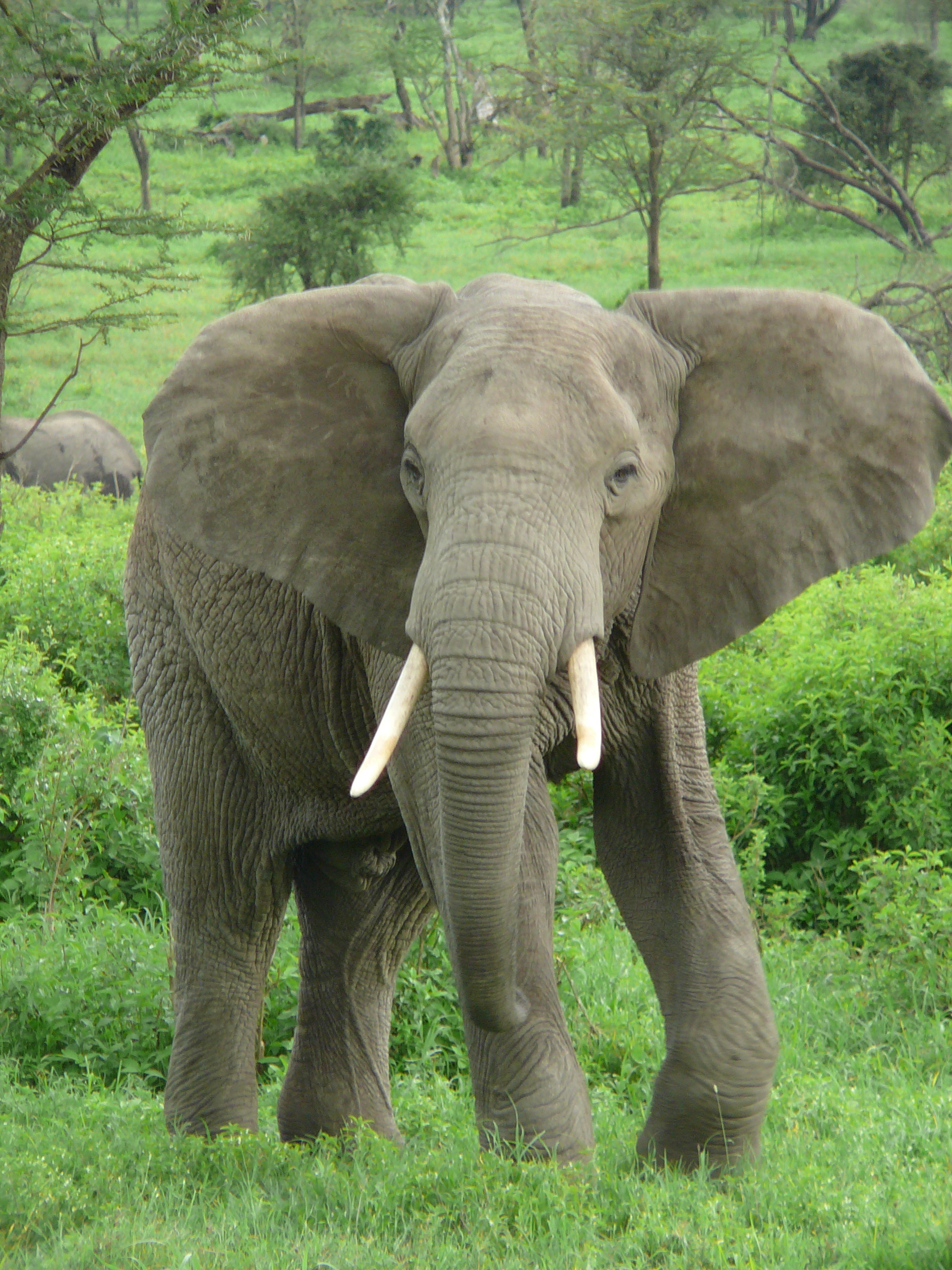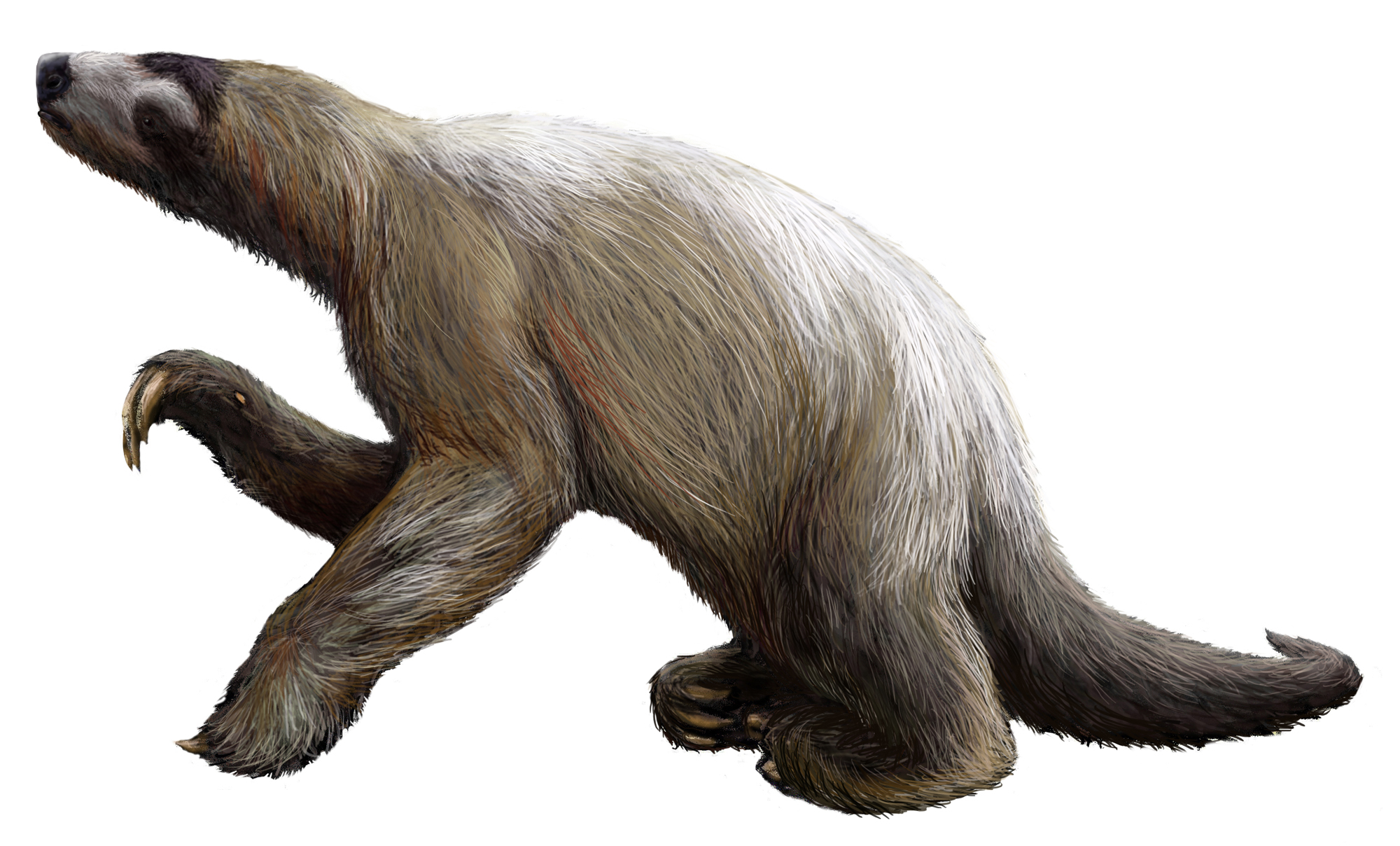|
Xenarthra
Xenarthra (; from Ancient Greek ξένος, xénos, "foreign, alien" + ἄρθρον, árthron, "joint") is a major clade of placental mammals native to the Americas. There are 31 living species: the anteaters, tree sloths, and armadillos. Extinct xenarthrans include the glyptodonts, pampatheres and ground sloths. Xenarthrans originated in South America during the late Paleocene about 60 million years ago. They evolved and diversified extensively in South America during the continent's long period of isolation in the early to mid Cenozoic Era. They spread to the Antilles by the early Miocene and, starting about 3 Mya, spread to Central and North America as part of the Great American Interchange. Nearly all of the formerly abundant megafaunal xenarthrans became extinct at the end of the Pleistocene. Xenarthrans share several characteristics not present in other placental mammals, which suggest their ancestors were subterranean diggers for insects. The name Xenarthra deriv ... [...More Info...] [...Related Items...] OR: [Wikipedia] [Google] [Baidu] |
Great American Interchange
The Great American Biotic Interchange (commonly abbreviated as GABI), also known as the Great American Interchange and the Great American Faunal Interchange, was an important late Cenozoic paleozoogeographic biotic interchange event in which land and freshwater fauna migrated from North America via Central America to South America and vice versa, as the volcanic Isthmus of Panama rose up from the sea floor and bridged the formerly separated continents. Although earlier dispersals had occurred, probably over water, the migration accelerated dramatically about 2.7 million years ( Ma) ago during the Piacenzian age. It resulted in the joining of the Neotropic (roughly South American) and Nearctic (roughly North American) biogeographic realms definitively to form the Americas. The interchange is visible from observation of both biostratigraphy and nature ( neontology). Its most dramatic effect is on the zoogeography of mammals, but it also gave an opportunity for reptiles, ... [...More Info...] [...Related Items...] OR: [Wikipedia] [Google] [Baidu] |
Glyptodont
Glyptodonts are an extinct subfamily of large, heavily armoured armadillos. They arose in South America around 48 million years ago and spread to southern North America after the continents became connected several million years ago. The best-known genus within the group is '' Glyptodon''. While they were formerly considered to constitute the distinct family Glyptodontidae, in 2016, an analysis of '' Doedicurus'' Mitochondrial DNA (also known as mtDNA / mDNA) found that it was, in fact, nested within the modern armadillos as the sister group of a clade consisting of Chlamyphorinae and Tolypeutinae. For this reason, glyptodonts and all armadillos but ''Dasypus'' were relocated to a new family, Chlamyphoridae, and glyptodonts were demoted from the former family Glyptodontidae to a subfamily. Evolution Glyptodonts first evolved during the Eocene in South America, which remained their center of species diversity. For example, an Early Miocene glyptodont with many primitive f ... [...More Info...] [...Related Items...] OR: [Wikipedia] [Google] [Baidu] |
Ground Sloth
Ground sloths are a diverse group of extinct sloths in the mammalian superorder Xenarthra. The term is used to refer to all extinct sloths because of the large size of the earliest forms discovered, compared to existing tree sloths. The Caribbean ground sloths, the most recent survivors, lived in the Antilles, possibly until 1550 BCE. However, radiocarbon dating suggests an age of between 2819 and 2660 BCE for the last occurrence of ''Megalocnus'' in Cuba. Ground sloths had been extinct on the mainland of North and South America for 10,000 years or more. They survived 5,000–6,000 years longer in the Caribbean than on the American mainland, which correlates with the later colonization of this area by humans. Much ground sloth evolution took place during the late Paleogene and Neogene of South America, while the continent was isolated. At their earliest appearance in the fossil record, the ground sloths were already distinct at the family level. The prese ... [...More Info...] [...Related Items...] OR: [Wikipedia] [Google] [Baidu] |
Sloth
Sloths are a group of Neotropical xenarthran mammals constituting the suborder Folivora, including the extant arboreal tree sloths and extinct terrestrial ground sloths. Noted for their slowness of movement, tree sloths spend most of their lives hanging upside down in the trees of the tropical rainforests of South America and Central America. Sloths are considered to be most closely related to anteaters, together making up the xenarthran order Pilosa. There are six extant sloth species in two genera – '' Bradypus'' (three–toed sloths) and '' Choloepus'' (two–toed sloths). Despite this traditional naming, all sloths have three toes on each rear limb-- although two-toed sloths have only two digits on each forelimb. The two groups of sloths are from different, distantly related families, and are thought to have evolved their morphology via parallel evolution from terrestrial ancestors. Besides the extant species, many species of ground sloths ranging up to the size of ele ... [...More Info...] [...Related Items...] OR: [Wikipedia] [Google] [Baidu] |
Megafauna
In terrestrial zoology, the megafauna (from Greek μέγας ''megas'' "large" and New Latin '' fauna'' "animal life") comprises the large or giant animals of an area, habitat, or geological period, extinct and/or extant. The most common thresholds used are weight over see page 17 (i.e., having a mass comparable to or larger than a human) or over a tonne, (i.e., having a mass comparable to or larger than an ox). The first of these include many species not popularly thought of as overly large, and being the only few large animals left in a given range/area, such as white-tailed deer, Thomson's gazelle, and red kangaroo. In practice, the most common usage encountered in academic and popular writing describes land mammals roughly larger than a human that are not (solely) domesticated. The term is especially associated with the Pleistocene megafauna – the land animals often larger than their extant counterparts that are considered archetypical of the last ice age, such as ... [...More Info...] [...Related Items...] OR: [Wikipedia] [Google] [Baidu] |
Pampatheriidae
Pampatheriidae ("Pampas beasts") is an extinct family of large plantigrade armored armadillos related to extant armadillos in the order Cingulata. However, pampatheriids have existed as a separate lineage since at least the middle Eocene Mustersan age, . Pampatheres evolved in South America during its long period of Cenozoic isolation. Although widespread, they were less diverse and abundant than the armadillos. '' Holmesina'' spread to North America after the formation of the Isthmus of Panama as part of the Great American Interchange. They finally disappeared on both continents in the end-Pleistocene extinctions, about 12,000 years ago. Description Pampatheres are believed to have attained a weight of up to . Like three-banded armadillos, and unlike glyptodonts, their armored shell was given some flexibility by three movable lateral bands of scutes. The osteoderms (bony plates in the skin comprising the armor) of pampatheres were each covered by a single keratinized sc ... [...More Info...] [...Related Items...] OR: [Wikipedia] [Google] [Baidu] |
Pilosa
The order Pilosa is a clade of xenarthran placental mammals, native to the Americas. It includes the anteaters and sloths (which includes the extinct ground sloths). The name comes from the Latin word for "hairy". Origins and taxonomy The biogeographic origins of the Pilosa are still unclear, but they can be traced back in South America as far as the early Paleogene (about 60 million years ago, only a short time after the end of the Mesozoic Era). The presence of these animals in Central America and their former presence in North America is a result of the Great American Interchange. A number of sloths were also formerly present on the Antilles, which they reached from South America by some combination of rafting or floating with the prevailing currents. Together with the armadillos, which are in the order Cingulata, pilosans are part of the larger superorder Xenarthra, a defining characteristic of which is the presence of xenarthrals (extra formations between ... [...More Info...] [...Related Items...] OR: [Wikipedia] [Google] [Baidu] |
Armadillo
Armadillos (meaning "little armored ones" in Spanish) are New World placental mammals in the order Cingulata. The Chlamyphoridae and Dasypodidae are the only surviving families in the order, which is part of the superorder Xenarthra, along with the anteaters and sloths. Nine extinct genera and 21 extant species of armadillo have been described, some of which are distinguished by the number of bands on their armor. All species are native to the Americas, where they inhabit a variety of different environments. Armadillos are characterized by a leathery armor shell and long, sharp claws for digging. They have short legs, but can move quite quickly. The average length of an armadillo is about , including its tail. The giant armadillo grows up to and weighs up to , while the pink fairy armadillo has a length of only . When threatened by a predator, '' Tolypeutes'' species frequently roll up into a ball; they are the only species of armadillo capable of this. Etymology ... [...More Info...] [...Related Items...] OR: [Wikipedia] [Google] [Baidu] |
Paleocene
The Paleocene, ( ) or Palaeocene, is a geological epoch that lasted from about 66 to 56 million years ago (mya). It is the first epoch of the Paleogene Period in the modern Cenozoic Era. The name is a combination of the Ancient Greek ''palaiós'' meaning "old" and the Eocene Epoch (which succeeds the Paleocene), translating to "the old part of the Eocene". The epoch is bracketed by two major events in Earth's history. The K–Pg extinction event, brought on by an asteroid impact and possibly volcanism, marked the beginning of the Paleocene and killed off 75% of living species, most famously the non-avian dinosaurs. The end of the epoch was marked by the Paleocene–Eocene Thermal Maximum (PETM), which was a major climatic event wherein about 2,500–4,500 gigatons of carbon were released into the atmosphere and ocean systems, causing a spike in global temperatures and ocean acidification. In the Paleocene, the continents of the Northern Hemisphere were still connected v ... [...More Info...] [...Related Items...] OR: [Wikipedia] [Google] [Baidu] |
Testicle
A testicle or testis (plural testes) is the male reproductive gland or gonad in all bilaterians, including humans. It is homologous to the female ovary. The functions of the testes are to produce both sperm and androgens, primarily testosterone. Testosterone release is controlled by the anterior pituitary luteinizing hormone, whereas sperm production is controlled both by the anterior pituitary follicle-stimulating hormone and gonadal testosterone. Structure Appearance Males have two testicles of similar size contained within the scrotum, which is an extension of the abdominal wall. Scrotal asymmetry, in which one testicle extends farther down into the scrotum than the other, is common. This is because of the differences in the vasculature's anatomy. For 85% of men, the right testis hangs lower than the left one. Measurement and volume The volume of the testicle can be estimated by palpating it and comparing it to ellipsoids of known sizes. Another method is to use calip ... [...More Info...] [...Related Items...] OR: [Wikipedia] [Google] [Baidu] |
Vermilingua
Anteater is a common name for the four extant mammal species of the suborder Vermilingua (meaning "worm tongue") commonly known for eating ants and termites. The individual species have other names in English and other languages. Together with the sloths, they are within the order Pilosa. The name "anteater" is also commonly applied to the unrelated aardvark, numbat, echidnas, pangolins, and some members of the Oecobiidae, although they are not closely related to them. Extant species are the giant anteater ''Myrmecophaga tridactyla'', about long including the tail; the silky anteater ''Cyclopes didactylus'', about long; the southern tamandua or collared anteater ''Tamandua tetradactyla'', about long; and the northern tamandua ''Tamandua mexicana'' of similar dimensions. Taxonomy Classification The anteaters are more closely related to the sloths than they are to any other group of mammals. Their next closest relations are armadillos. There are four extant species in thre ... [...More Info...] [...Related Items...] OR: [Wikipedia] [Google] [Baidu] |
_(cropped).jpg)








